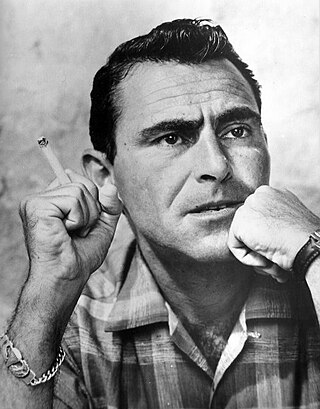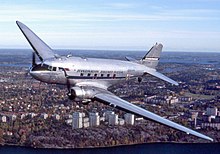
The Twilight Zone is an American media franchise based on the anthology television series created by Rod Serling in which characters find themselves dealing with often disturbing or unusual events, an experience described as entering "the Twilight Zone". The episodes are in various genres, including fantasy, science fiction, absurdism, dystopian fiction, suspense, horror, supernatural drama, black comedy, and psychological thriller, frequently concluding with a macabre or unexpected twist, and usually with a moral. A popular and critical success, it introduced many Americans to common science fiction and fantasy tropes. The first series, shot entirely in black-and-white, ran on CBS for five seasons from 1959 to 1964.

Rodman Edward Serling was an American screenwriter and television producer best known for his live television dramas of the 1950s and his anthology television series The Twilight Zone. Serling was active in politics, both on and off the screen, and helped form television industry standards. He was known as the "angry young man" of Hollywood, clashing with television executives and sponsors over a wide range of issues, including censorship, racism, and war.

"Where Is Everybody?" is the first episode of the American anthology television series The Twilight Zone and was originally broadcast on 2 October 1959, on CBS. It is one of the most realistic Twilight Zone episodes, as it features no supernatural elements and is based on fairly straightforward extrapolation of science.
"Mr. Denton on Doomsday" is episode three of the American television anthology series The Twilight Zone. It originally aired on October 16, 1959, on CBS. It was the first Twilight Zone episode to be rerun.

"Time Enough at Last" is the eighth episode of the American anthology series The Twilight Zone, first airing on November 20, 1959. The episode was adapted from a short story by Lynn Venable, which appeared in the January 1953 edition of If: Worlds of Science Fiction.
"I Shot an Arrow into the Air" is the fifteenth episode of the American television anthology series The Twilight Zone.
"The Fever" is the seventeenth episode of the American television anthology series The Twilight Zone. It originally aired on January 29, 1960, on CBS. The complete, original text for this story was run in the debut issue of Harvey Kurtzman’s Help!, cover dated August, 1960.

"The Last Flight" is the eighteenth episode of the American television anthology series The Twilight Zone. Part of the production was filmed on location at Norton Air Force Base in San Bernardino, California. The vintage 1918 Nieuport 28 biplane was both owned and flown by Frank Gifford Tallman, and had previously appeared in many World War I motion pictures.

"Mirror Image" is the twenty-first episode of the American television anthology series The Twilight Zone. It originally aired on February 26, 1960, on CBS.
"A World of His Own" is episode thirty-six of the American television anthology series The Twilight Zone. It was the last episode of the show's first season and essentially comedic in tone. It originally aired on July 1, 1960, on CBS.
"The Odyssey of Flight 33" is episode 54 of the American television anthology series The Twilight Zone, the 18th episode of the second season. An unlikely break of the time barrier finds a commercial airliner sent back into the prehistoric age and then to New York City of 1939. The tale is a modern telling of the Flying Dutchman myth, and was written by series creator Rod Serling. It originally aired on February 24, 1961 on CBS.
"Will the Real Martian Please Stand Up?" is episode 64 of the American television anthology series The Twilight Zone. It originally aired on May 26, 1961 on CBS.

"Nightmare at 20,000 Feet" is the third episode of the fifth season American television anthology series The Twilight Zone, based on the short story of the same name by Richard Matheson, first published in the short story anthology Alone by Night (1961). It originally aired on October 11, 1963, and is one of the most well-known and frequently referenced episodes of the series. The story follows a passenger on an airline flight who notices a hideous creature trying to sabotage the aircraft during flight.

Twilight Zone: The Movie is a 1983 American science fiction anthology film produced by Steven Spielberg and John Landis. Based on Rod Serling's 1959–1964 television series of the same name, the film features four stories directed by Landis, Spielberg, Joe Dante, and George Miller. Landis' segment is an original story created for the film, while the segments by Spielberg, Dante, and Miller are remakes of episodes from the original series. The film's cast includes Dan Aykroyd, Albert Brooks, Scatman Crothers, John Lithgow, Vic Morrow, and Kathleen Quinlan. Original series cast members Burgess Meredith, Patricia Barry, Peter Brocco, Murray Matheson, Kevin McCarthy, Bill Mumy, and William Schallert also appear in the film, with Meredith assuming Serling's role as narrator.
"The Parallel" is episode 113 of the American television anthology series The Twilight Zone. In this episode an astronaut returns from a voyage to find the world not quite the same as he remembers it. It was an early example of the concept of mirror or alternate universes. The Star Trek: The Original Series episode "Mirror, Mirror" was another example, although the differences between the characters in the two Star Trek alternate universes were quite noticeable. The concept has also been used by both DC Comics and Marvel Comics in their comic books and cinematic universes.

The Twilight Zone is an American fantasy science fiction horror anthology television series created and presented by Rod Serling, which ran for five seasons on CBS from October 2, 1959, to June 19, 1964. Each episode presents a standalone story in which characters find themselves dealing with often disturbing or unusual events, an experience described as entering "the Twilight Zone", often with a surprise ending and a moral. Although often considered predominantly science-fiction, the show's paranormal and Kafkaesque events leaned the show much closer to fantasy and horror. The phrase "twilight zone", inspired by the series, is used to describe surreal experiences.

American Airlines Flight 157, a Douglas DC-6, departed on November 29, 1949, from New York City bound for Mexico City with 46 passengers and crew. After one engine failed in mid-flight, a series of critical mistakes by the flight crew caused the pilot to lose control of the plane during the final approach to a routine stopover at Love Field in Dallas, Texas. The airliner slid off the runway and struck a parked airplane, a hangar, and a flight school before crashing into a business across from the airport. 26 passengers and two flight attendants died. The pilot, co-pilot, flight engineer, and 15 passengers survived.
"The Old Man in the Cave" is a half-hour episode of the original version of The Twilight Zone. It is set in a post-apocalyptic 1974, ten years after a nuclear holocaust in the United States. The episode is a cautionary tale about humanity's greed and the danger of questioning one's faith in forces greater than oneself.

Atlantic Southeast Airlines Flight 529 was an Embraer EMB 120 Brasilia aircraft that crashed in the community of Burwell between the cities Bowdon, Georgia and Carrollton, Georgia, on August 21, 1995. Nine of the 29 passengers and crew on board were killed as a result of the accident. The accident bore similarities to Atlantic Southeast Airlines Flight 2311, which had occurred four years earlier, and resulted in the deaths of all 23 people on board. The inquiries of both crashes concluded that design flaws in the aircraft's propellers were to blame.
Robert Jerome Serling was an American novelist and aviation writer.










